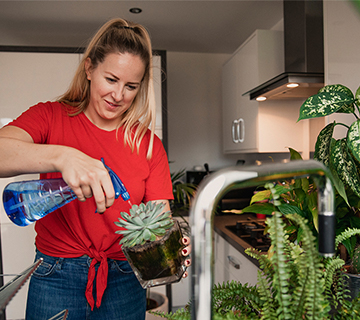6 Houseplants That Purify Your Air

Looking to replace the 10-year-old artificial plant in the corner of your room? Why not take care of a real plant that takes care of you? Yes, certain plants can actually help remove volatile organic compounds from the air in your home.
Volatile organic compounds (VOCs) are indoor air pollutants notorious for causing health problems, especially in children and adults with existing respiratory conditions. Airborne VOCs include carbon dioxide, benzene, formaldehyde and mercury. These can be expelled from everyday things like building materials, personal care products, stoves and tobacco smoke.
As you may already know, plants undergo photosynthesis. This is the process that removes carbon dioxide from the air and replaces it with oxygen. What you may not know is that NASA proved that plants also remove a significant amount of toxins from the air. Which houseplants do the most work? We put together a list that can help purify your home of toxins.
Peace Lily (Spathiphyllum wallisii)
This all-time indoor and outdoor favorite tops the list of purifiers, filtering benzene, formaldehyde, trichloroethylene, xylene, toluene and ammonia from the air.
Devil's Ivy (Epipremnum aureum)
Known as one the easiest plants to grow indoors, Devil’s Ivy is a low-maintenance powerhouse. It removes benzene, formaldehyde, trichloroethylene, xylene and toluene from the air.
Mother-in-Law's Tongue (Sansevieria trifasciata)
This stiff, upright plant grows up to four feet tall and can withstand a variety of indoor conditions. It also rids the air of benzene, formaldehyde, trichloroethylene, xylene and toluene.
English Ivy (Hedera helix)
It’s not the easiest plant to grow indoors, but for those looking for a trailing/climbing plant that offers a cascading look, it may be worth the challenge. The English Ivy filters benzene, formaldehyde, xylene and toluene from the air.
Lady Palm (Rhapis excelsa)
Bring the tropics to your home with this easy-to-grow fanning palm. It helps remove formaldehyde, xylene, toluene and ammonia from the air.
Boston Fern (Nephrolepis exaltata)
It’s one of the most common indoor ferns and is characterized by its wicked hardy look. Boston Fern effectively removes formaldehyde, xylene and toluene.
Article source link has expired.


